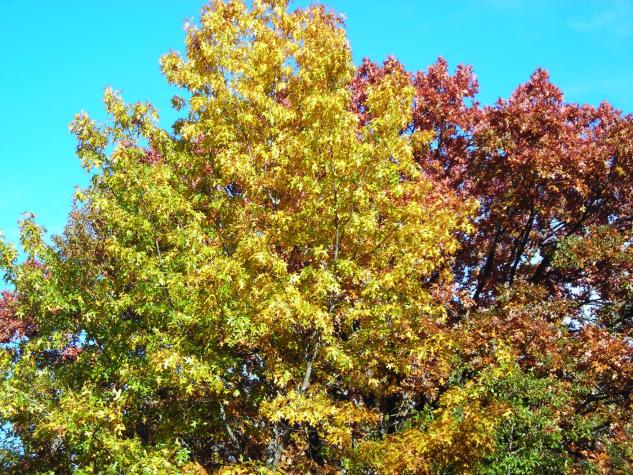COLUMBIA, Mo. – The leaves are down, winter is upon us, and that means it’s prime time for pruning oak trees, which can be infected by the oak wilt fungus if they’re pruned during the high-risk period mid-March through mid-July.
“Beetles that can carry the disease from tree to tree are not very active now, and the trees are not vulnerable to infection,” said Hank Stelzer, state forestry specialist with University of Missouri Extension. The beetles are attracted to fresh bark damage or wounds where tree limbs have been removed.
Oak wilt also spreads when firewood from infected trees is moved to new locations. If you cut wood from an oak tree that might have died from oak wilt, cover the wood with a plastic tarp and bury the tarp’s edges underground to prevent access by the beetles that spread the disease. Ensure the tarp remains intact for six to12 months until the bark sloughs off. This will kill the fungus and prevent its spread to healthy trees, said Stelzer.
Tree trimming around structures, limb removal and even construction or clearing that can result in damage to oak trees should be planned outside of the oak wilt susceptibility period.
Waiting for winter assures that trees are dormant, so they won’t respond with new growth late in the season that is more vulnerable to winter injury.
Oak wilt, identified in the 1940s, is widespread across Missouri. Red oaks are most susceptible and can die within weeks of infection. These trees have leaves with pointed tips and include black oak, northern red oak and pin oak. Trees in the white oak group have rounded leaf edges and are less susceptible. Affected trees will suddenly wilt from the top down, rapidly dropping leaves, which can be green, brown or a combination of both colors.
If you suspect oak wilt, you can verify the infection with the MU Plant Diagnostic Clinic. Go to https://plantclinic.missouri.edu or call 573-882-3019.
